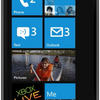 A new technology developed by Microsoft in alliance with the University of Massachusetts (UMASS), and the University of Washington has resulted in a new technology called Vi-Fi (Vehicle Wi-Fi). Vi-Fi solves the problem of hopping from one Wi-Fi wireless access point (WAP) to another when signal strength diminishes. According to the article, the goal of Vi-Fi could be to power VoIP calls, Internet, and radio in cars of the future.
A new technology developed by Microsoft in alliance with the University of Massachusetts (UMASS), and the University of Washington has resulted in a new technology called Vi-Fi (Vehicle Wi-Fi). Vi-Fi solves the problem of hopping from one Wi-Fi wireless access point (WAP) to another when signal strength diminishes. According to the article, the goal of Vi-Fi could be to power VoIP calls, Internet, and radio in cars of the future.Ironically, Andy wrote a controversial blog this week about VoIPing while flying (using Aircell) -- well now you can VoIP while driving too! Of course, I've been using VoIP over EVDO for some time now while driving. I was even able to register my Windows Mobile 6.1 device (EVDO as well) to an Asterisk server sitting in my office and make/receive office calls.

With this forthcoming technology, who needs XM or SIRIUS when you can stream radio for free over the internet with hundreds if not thousands to choose from? Time to short satellite radio stocks?
The system they are developing will provide users with on-the-go internet access more cheaply than existing cellular broadband systems. The challenge this alliance aims to solve can be explained by this excerpt of the article:
The key to to solving this challenge is the use of multiple base stations. The station can send and receive signals from more than on base station, and the strongest strength gets assigned as the "anchor" system, while the other systems are used as "auxiliary" systems. A complex algorithm is constantly calculating the probability of a packet not reaching the main station. If that probability reaches a certain threshold the auxiliary stations try to forward it to the main station.The key to Microsoft's new system is a steady signal. In Wi-Fi networks, as you travel overland, each signal station (base station) only broadcasts so far, so you have to hop between stations. During these transitions, known as "hard handoffs", the signal strength typically drops. At best this makes car Wi-Fi unpleasant, and at worst it makes it unworkable.
They did some test trials at Microsoft's campus and found the system eliminated nearly all the problems of network hopping while driving. Just don't expect Wi-Fi / Vi-Fi coverage to be as ubiquitous as say EVDO, 3G, etc. while driving. EVDO, 3G and other cellular data transmissions can travel a lot further than Wi-Fi signals, which are only rated for 300feet. So you'll still need a ton of these specialized Wi-Fi stations with the special software to get decent coverage.
But considering most homes have Wi-Fi APs, it could be very cool if you could build a massive Vi-Fi network using consumer's existing Wi-Fi APs. Simple firmware upgrade? But then you get into the whole security issues, bandwidth theft, etc. Still, the work Microsoft and these universities are doing is fascinating. How soon will be before we have truly mobile and ubiquitous Wi-Fi Internet access? Who knows? But my EVDO card works just fine almost wherever I go. It's not as fast as Wi-Fi but it works well enough.













